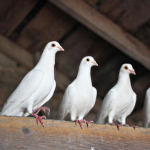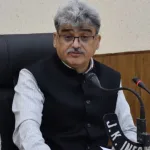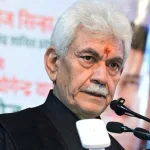Bangladesh has been in deep unrest over the past few weeks. Violence had broken out across the country between security forces, government supporters, and students protesting against job quotas for the descendants of the 1971 Bangladesh Liberation War veterans. Media reports suggest that till the 21st of July, nearly 133 people have been killed and hundreds have been injured. Eyewitness accounts from students describe police deploying tear gas and rubber bullets against them. At the same time, authorities have revealed that nearly 300 police officers have been injured, government property vandalized and vehicles parked outside government buildings have been set ablaze. The state broadcaster, Bangladesh Television, has also been torched. The protests had initially been peaceful until activists of the Bangladesh Chhatra League, the students’ wing of the Awami League, the ruling party, allegedly attacked those demonstrating on the campus of Dhaka University, after which the violence spread. To control the situation, the government incrementally deployed the police, the Border Guards Bangladesh, and the army with shoot-at-sight orders. Additionally, a national curfew was imposed, for which schools and universities were shut down, transport services were halted, and mobile and internet connections collapsed. However, the situation was further aggravated with instances of violence reported in 26 of Bangladesh’s 64 districts. Although the Supreme Court’s recent verdict does resolve the core concern of the students by significantly reducing the quota for the descendants of the ‘Muktijoddhas’ from 30 percent to five percent, leaving 93 percent of the government jobs to be secured on merit, they have vowed to continue the protests until their other demands are met. These include “the release of those jailed and resignations of the officials responsible for the violence.” It is thus essential to analyze why the protest happened, the government’s response, and its implications. The protests are against a ruling made by the High Court Division of the Supreme Court of Bangladesh on 1st July this year, to reinstate a quota reserving 30 percent of government and semi-government jobs for the descendants of the 1971 War veterans. This quota owes its origin to a constitutional mandate made in 1972 under the governance of Bangabandhu Sheikh Mujibur Rahman, to protect the interests of backward sections in Bangladeshi society. Article 29(3) (a) of the Bangladesh Constitution states that the government can make “special provisions in favour of any backward section…for the purpose of securing their adequate representation in the service of the Republic.” Subsequently, a 30 percent reservation was made for the freedom fighters who had lost their lands and properties at the hands of the Pakistani authorities, and another 10 percent was reserved for women. The quotas remained intact until 1996 when Bangabandhu Sheikh Mujibur Rahman’s daughter Sheikh Hasina assumed office as Prime Minister and extended the benefit to the children of the ‘Muktijoddhas,’ and then to their grandchildren after her re-election in 2009. As a result, a total of 56 percent (30 percent for descendants of war veterans, 10 percent for women, 10 percent for the backward districts, 5 percent for ethnic minorities, and 1 percent for people with physical disabilities) of government positions, coveted for their stability and guaranteed income, remained reserved for specific groups. This allowed only 44 percent of the jobs to be secured by merit, a challenging prospect in the eighth most populated country of the world. Consequently, in 2018, the quota system was repealed after the Hasina government faced student protests ahead of the parliamentary elections. However, in 2021 a lawsuit was filed in the Supreme Court by the “children of nationally recognized freedom fighters,” to reinstate the erstwhile 30 percent reservation, which it did after three years, citing that the progeny of the freedom fighters remained one of the most backward sections of the country. Although poverty in Bangladesh has reduced from 9 percent in 2016 to 5 percent in 2022, and as the country gears to leave behind its ‘Least Developed Country’ status by 2026 and attain middle-income-country status by 2030, in recent years, the economy has been suffering. In 2022, the government sought a loan from the International Monetary Fund to help its declining forex reserves. Unemployment ran high post-COVID-19, and inflation soared due to the impacts of the Russia-Ukraine war. Against this backdrop, the Supreme Court’s verdict spurred student protests to reduce the reservation quota and a petition was filed in the Supreme Court. Subsequently, the High Court order was suspended for four weeks while peaceful demonstrations continued, until a comment was made by the Prime Minister, “If jobs aren’t reserved for veterans, who should they be reserved for? Children of razakars?”. PM Hasina returned for a fourth consecutive term to power this year, sealing her legacy as the longest-reigning Prime Minister of Bangladesh. However, the legitimacy of her victory has been questioned, with the Opposition boycotting the polls and a low voter turnout of forty percent. To strengthen its position, the government has been taking various measures, including securing India’s assistance for the Teesta project. This achievement is significant for the Hasina government, as it has long endured criticism from the Opposition for failing to resolve the issue despite good relations with New Delhi.
Bangladesh Crisis

Sign Up For Daily Newsletter
Be keep up! Get the latest breaking news delivered straight to your inbox.
By signing up, you agree to our Terms of Use and acknowledge the data practices in our Privacy Policy. You may unsubscribe at any time.
Leave a Comment Leave a Comment
Stay Connected
Latest News
Recent Posts
- CS reviews development works in Budgam; assures district’s economic transformation
- LG Sinha addressed youth during an event organised by Wadies Hindi Shiksha Samiti
- Two convicted in separate trap cases in Pulwama, Anantnag
- India temporarily suspends postal services to United States
- Rana Conducts Inspection of 1.125 MGD Rapid Sand Filtration Water Treatment Plant at Mehjoor Nagar







